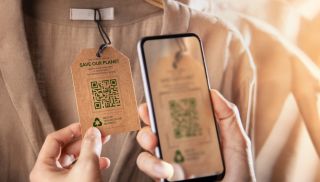How Consumers Can Help the Planet. Reuse and upcycle. Reviewed by Michelle Quirk

KEY POINTS-
- If the whole world consumes as much as Western societies, extra planets will be required to sustain it.
- Reusing and upcycling can be one way of reducing how much people consume.
- Marketing and communication can help encourage people to opt for reused and upcycled items.
As I am writing this, I have just had the pleasure of hearing writer Michael Morpurgo reading one of his latest children’s poems, "Driftwood," which is about a piece of driftwood that was made into a chair. The story celebrates the idea that you can reuse and upcycle a piece of material many times over. Teaching children about the concept of "reusing" is more important than ever as the materials used by humans now weigh more than all life on Earth. Couple this with calculations made on how many planet Earths we require to sustain the Westernized levels of consumption globally, it quickly becomes evident that humans need to change their consumer behaviors. And, in case you are wondering, around three or four extra planets are required!
Reusing products is not something that comes naturally to consumers as they rarely think about reusing or upcycling when goods reach the end of their lifecycle. Unfortunately, the idea of purchasing something new is often perceived as more desirable. However, with many steps being taken by businesses to encourage resales, the reuse of products is on the rise.
So, bearing in mind that consumerism is so deeply ingrained into Western society, and simply highlighting environmental issues is not enough, what can be done to help people "see" the value of making items and materials last longer as well as purchasing green products? Whilst there is no one easy answer to this question, there are definitely a few things that can be done.
Communicate effectively with consumers
It is increasingly common for shops to sell upcycled items; think about furniture and clothes.
It is always key to communicate sustainably linked information effectively as well as to use terminology that consumers instantly recognize and understand. The label is one common source of information and, thus, it needs to clearly state the product's green credentials. This could include clear clarification on why and how a product has been upcycled.
Already existing environmentally concerned shoppers often want as much information as possible about how the product is environmentally friendly. Unfortunately, most packaging is too small to include extensive product information.

However, mobile tagging (a link from the product directly to online information) can be used to provide consumers with all the information they need to determine whether the product delivers on their green criteria. Whilst many upcycled or second-hand items may not have packaging, this idea could be reapplied to an attached label.
Make use of third-party certification labels
Another way to communicate effectively with consumers can be through the use of third-party certification labels. Such labels can clearly signal to shoppers that a product has been "certified" by a company. In turn, it reduces any usage risk perceived by the consumer and, thus, increases the likelihood of purchase as well as that of paying a premium price. However, the company chosen to certify the product needs to be one that is familiar to the consumer as they are otherwise less likely to trust them. This can also be applicable to second-hand stores.
Aesthetic appeal is key
Whilst environmental concerns are factors in becoming creative to upscale old items, so also is money, a sense of enjoyment, and thriftiness. These aspects are also (at least to some extent) related to why people get a thrill to hunt for something that is reusable and cost-effective. However, it appears that the outcome of the upscaling is also important. As for the majority of products purchased, aesthetic appeal and symbolic value have a key role to play in the appreciation of the upscaling. People who are concerned about the environment want the items to represent what they stand for and, thus, they are symbolic of their beliefs. That is not to say that they are prepared to compromise on the way it looks, as the "look" is also important.
Clothes shopping offers the "thrill of the hunt"
Shopping for second-hand clothing can sometimes be hampered by social embarrassment. Hence, how different types of clothing are marketed can play a key role in encouraging consumers to purchase second-hand clothing. For example, "vintage" clothing is linked to fashion involvement and proneness to nostalgia, whilst nonbranded everyday second-hand clothing is often driven by frugality. Thus, marketing strategies should be geared toward such differences. However, there are also commonalities between the two types in that consumers are enjoying the thrill of the hunt. Even though one is hunting for a unique piece connected to history, the other is looking for a really good price. Such commonality could be used across all green marketing to generate a thrill for consumers to find an item they are looking for.
Whilst the interest in reusing and upcycling is growing, there is still a long way to go in making it appeal to the masses. Therefore, it is essential to understand what can be done to help this process along and help to protect the environment.
- Questions and Answers
- Opinion
- Story/Motivational/Inspiring
- Technology
- Art
- Causes
- Crafts
- Dance
- Drinks
- Film/Movie
- Fitness
- Food
- Games
- Gardening
- Health
- Home
- Literature
- Music
- Networking
- Other
- Party
- Religion
- Shopping
- Sports
- Theater
- Wellness
- News
- Culture
- War machines and policy

